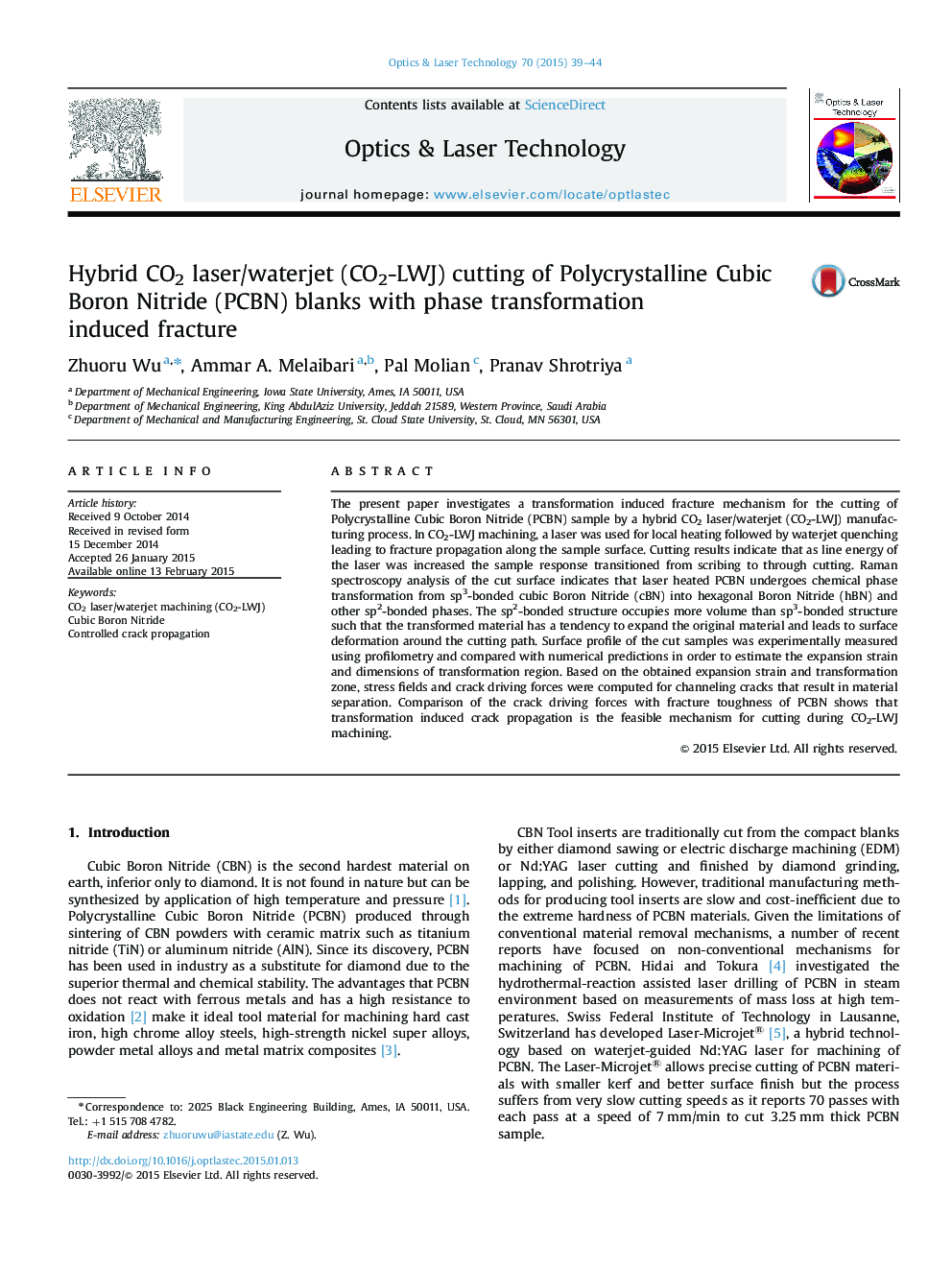| کد مقاله | کد نشریه | سال انتشار | مقاله انگلیسی | نسخه تمام متن |
|---|---|---|---|---|
| 739176 | 1461628 | 2015 | 6 صفحه PDF | دانلود رایگان |

• High speed cutting of PCBN was achieved with a CO2-laser/waterjet machining system.
• Cutting mechanism was identified as phase transition induced fracture propagation.
• Cutting mechanism was proved through numerical model and experimental measurement.
• Processing parameters and crack behavior were related based on identified mechanism.
• Fracture model was developed and presented high agreement with cutting results.
The present paper investigates a transformation induced fracture mechanism for the cutting of Polycrystalline Cubic Boron Nitride (PCBN) sample by a hybrid CO2 laser/waterjet (CO2-LWJ) manufacturing process. In CO2-LWJ machining, a laser was used for local heating followed by waterjet quenching leading to fracture propagation along the sample surface. Cutting results indicate that as line energy of the laser was increased the sample response transitioned from scribing to through cutting. Raman spectroscopy analysis of the cut surface indicates that laser heated PCBN undergoes chemical phase transformation from sp3-bonded cubic Boron Nitride (cBN) into hexagonal Boron Nitride (hBN) and other sp2-bonded phases. The sp2-bonded structure occupies more volume than sp3-bonded structure such that the transformed material has a tendency to expand the original material and leads to surface deformation around the cutting path. Surface profile of the cut samples was experimentally measured using profilometry and compared with numerical predictions in order to estimate the expansion strain and dimensions of transformation region. Based on the obtained expansion strain and transformation zone, stress fields and crack driving forces were computed for channeling cracks that result in material separation. Comparison of the crack driving forces with fracture toughness of PCBN shows that transformation induced crack propagation is the feasible mechanism for cutting during CO2-LWJ machining.
Journal: Optics & Laser Technology - Volume 70, July 2015, Pages 39–44